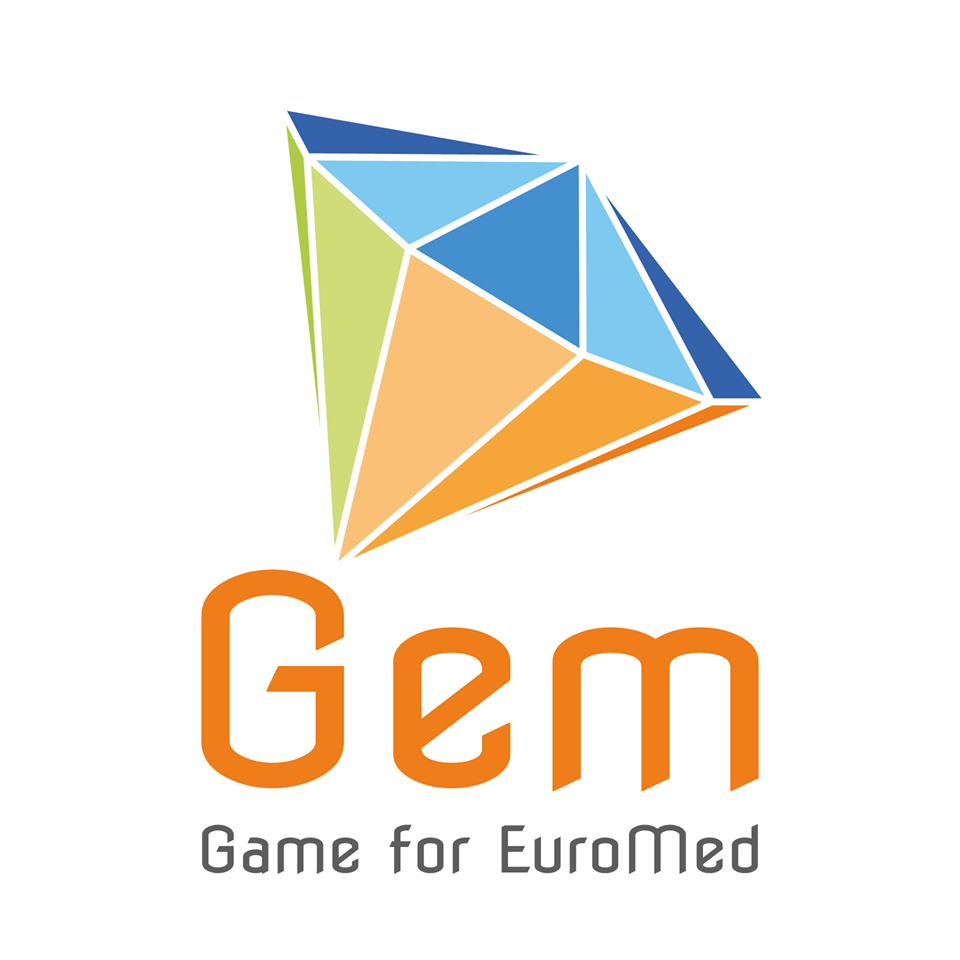Game for EuroMed
Category : Uncategorized
Article on GEM : Game for Euro Med
During the month of February Think Tank along with its three partners from Italy, France and Palestine have been cooperating through the GEM project for the purpose of creating a board game as a learning tool for intercultural citizenship in the Euro Med region, with the support of Anna Lindh foundation.
At this point of the project we have hosted an online training course for the 4 national teams on the concepts of intercultural citizenship and gamification. The training course was designed by a team of Italian experts in the field in addition to an Egyptian Trainer. The Italian team consisted of a project manager, project coordinator and trainer.
Team profile
Serving the diversity of the target groups who will play the game in the experimentation phase, teams had to include a diversity of educators, youth workers and project coordinators. The Egyptian team, consisting of 6 members, was equipped by an educator, 2 youth workers, 2 facilitators and 1 project coordinator. Their diverse input was imperative to the creative process to cover all aspects of intercultural citizenship and a comprehensive point of view toward the game. The team as well had a gender balance of 2 males and 4 females.
Dates
Training took place in think tank’s office connecting all the other 3 teams from Italy, France and Palestine. The training was held on 21st, 24th and 27th of February, where the training days were separated by a period of reflection, research and preparation tasks related to the subject.
Content
The content of the training course was built on 3 pillars (3 sessions). The first was the context of the game. In this first session participants explored the need of such a game and the purpose of the project. Through an inclusive presentation by the Italian coordinators on the mission and the objectives of the project, participants had the chance to get familiar with the process and understand the purpose behind it.
Participants got a kick start by acknowledging good practices in board gaming for learning, collected by project coordinators from all partners. These good practices listed several games designed for similar purpose in the 4 countries, exploring methodologies, analyzing elements and getting inspired by their results.
Second session marked the beginning of the creative process and the road map of our collaborative creation. The use of the 6 thinking hats facilitated the process and provided us with a map of thinking patterns that we should consider in our creation.
Third session was entirely dedicated to connecting the “play” and the process of gamification with the intercultural citizenship concept provided by the toolkit of intercultural citizenship published by ALF.
Participants had a chance to design their learning model of the game, structure game elements, list the added values and relate the game to their target groups.
Challenges: online and creative process
The training course was an obvious challenge in two dimensions, first the online virtual setting proved to be a challenge, yet a very efficient tool if planned properly. Internet connections varied from very weak, adequate and super strong from time to time. However, the team managed to maintain proper communication through the entire three sessions thanks to few rules we have established from the beginning. Simple things like turning off the mic and camera when you are not speaking, sharing documents on Dropbox to follow the presentations from local computer rather than online feed, using chatting at some points to explain tasks clearly and avoid confusion and misunderstanding due to varying English levels or different English accents.
Second dimension was the creative process itself. It is hard enough to get a group of 16 people working together to create one game, never mind doing it online without actually meeting. The process had to be structured in its simplest forms to be efficient and productive. Different views had to be considered and included while maintaining the main frame of the board game.
Thanks to the thinking hats methodology and the form of listing priorities, the creative process went smooth and produced outputs that defined and outlined the board game.
Outputs
4 Thinking Hats Map
4 lists of game elements needed in the game
4 lists of relevant intercultural citizenship elements to our target groups
4 lists of added values we expect from the game

Recent Comments